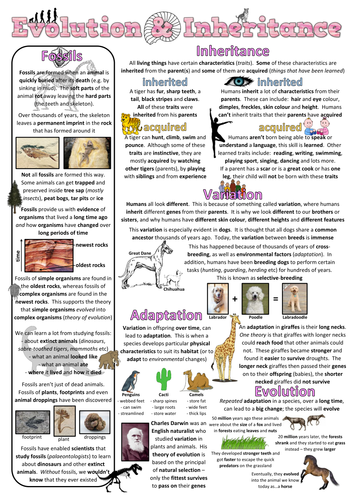






This is a collection of five posters to reinforce Science objectives in year 6. Each beautifully designed poster is packed full of information and can be either used for revision or as part of a display in your classroom. These are a perfect partner for my extremely popular, and Tes recommended, Science Assessments. Year 6 Science Assessments and Tracking
Objectives covered:
Describe how living things are classified into broad groups according to common observable characteristics and based on similarities and differences, including micro-organisms, plants and animals
Give reasons for classifying plants and animals based on specific characteristics
Identify and name the main parts of the human circulatory system, and describe the functions of the heart, blood vessels and blood
Recognise the impact of diet, exercise, drugs and lifestyle on the way their bodies function
Describe the ways in which nutrients and water are transported within animals, including humans
Recognise that living things have changed over time and that fossils provide information about living things that inhabited the Earth millions of years ago
Recognise that living things produce offspring of the same kind, but normally offspring vary and are not identical to their parents
Identify how animals and plants are adapted to suit their environment in different ways and that adaptation may lead to evolution
Recognise that light appears to travel in straight lines
Use the idea that light travels in straight lines to explain that objects are seen because they give out or reflect light into the eye
Explain that we see things because light travels from light sources to our eyes or from light sources to objects and then to our eyes
Use the idea that light travels in straight lines to explain why shadows have the same shape as the objects that cast them
Associate the brightness of a lamp or the volume of a buzzer with the number and voltage of cells used in the circuit
Compare and give reasons for variations in how components function, including the brightness of bulbs, the loudness of buzzers and the on/off position of switches
Use recognised symbols when representing a simple circuit in a diagram
Get this resource as part of a bundle and save up to 40%
A bundle is a package of resources grouped together to teach a particular topic, or a series of lessons, in one place.
Primary Science Assessments + Posters/Revision Sheets
This is a bundle of all my primary science assessments PLUS the accompanying posters/revision sheets. Please click on individual resources for full description and previews!
KS2 Science Assessments + Posters/Revision Sheets
This is a bundle of all my science assessments for KS2 PLUS the accompanying posters/revision sheets. Please click on individual resources for full description and previews!
Year 6 Science Assessments + Posters/Revision Sheets
This is a bundle of all my science assessments for year 6 PLUS the accompanying posters/revision sheets. Please click on individual resources for full description and previews!
Primary Science Posters/Revision Sheets
The Primary bundle of all my science posters for years 1-6. 28 posters in total. Please click on individual resources for descriptions and previews!
KS2 Science Posters/Revision Sheets
The KS2 bundle of all my science posters for years 3-6. 20 posters in total. Please click on individual resources for descriptions and previews!
Something went wrong, please try again later.
These are going to brilliant to use alongside my Science lessons and for revision.
Report this resourceto let us know if it violates our terms and conditions.
Our customer service team will review your report and will be in touch.